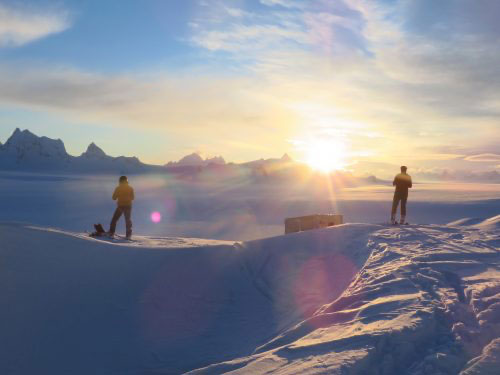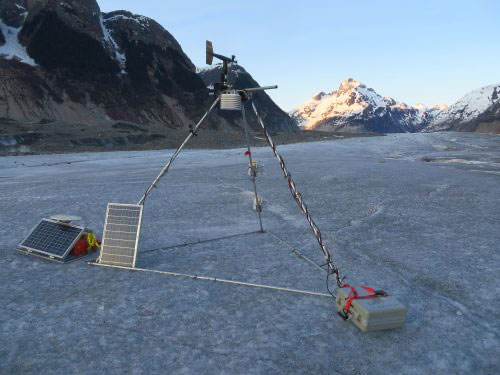
Runoff from melting Juneau Icefield increasesBy MOLLY TANKERSLEY
July 18, 2021
As the Juneau Icefield continues to lose mass, the flow will increase until “peak runoff” is reached, the researchers predicted. Peak glacial melt each season is also arriving earlier than in previous decades, altering stream habitat and hydrologic patterns in the surrounding watersheds and downstream estuaries. Area streams and rivers now see higher total runoff in the spring, with increases annually as well.
Prior to this study, which was published in the journal Water Resources Research, glaciers’ contribution to these coastal rivers was unknown. Moreover, Southeast Alaska is an extremely wet environment, with highly variable precipitation patterns that make it difficult to distinguish trends in the sources of streamflow captured by stream gauges. “Precipitation is such an overwhelming signal in the area, both in terms of sheer quantity and variability through different times of the year and through different years. It wasn’t clear if we would even be able to see the change in glacial input to streams amid the chaos of normal precipitation in Southeast Alaska,” said lead author Joanna Young, an AK CASC postdoctoral fellow. The team used a model that combines glacial, riverine and soil moisture processes. That allowed them to determine if increases in water volume are driven by snowmelt, heavy precipitation or glacial runoff. The model data produced by Young and her colleagues show that annual glacier ice melt on the Juneau Icefield has increased since the 1980s by 10% per decade and glacier runoff by 3%. (Glacier runoff includes water from both glacier ice melt and precipitation flowing off the glacier, so the increased percentages of ice melt and runoff differ.) Total runoff in the study’s watersheds increased by 1.4%. Peak runoff from glacial melt every year is occurring 2.5 days earlier each decade now than in the 1980s.
Glaciers play an important role in Southeast Alaska watersheds, acting as frozen freshwater reservoirs throughout the year. Cold, sediment-heavy glacial runoff has a unique signature that affects where salmon choose to spawn and the delivery of nutrients to coastal estuaries. In Southeast Alaska, where storm events or glacial lake outburst floods can frequently elevate rivers to flood level, a higher base level of water due to increasing glacial melt could exacerbate flood risk. Understanding future changes to streamflow patterns is important for infrastructure planning and resource management. “Our findings from the Juneau Icefield show that glacier loss is impacting streamflow regimes in coastal watersheds along the Gulf of Alaska, with implications for freshwater salmon habitat and the function of coastal marine ecosystems that receive runoff from glaciers,” said co-author Eran Hood, professor of environmental science at the University of Alaska Southeast. In addition to on-the-ground data collection on the Icefield, Young and her colleagues used satellite data on glaciers in the region to develop the model for this study. “We used a lot of different datasets to calibrate the model. By Alaska standards, the Juneau Icefield is one of the best monitored glacier regions in the state, and even in the northern part of North America in terms of long-term monitoring and the abundance of data that’s available,” said Young.
On the web:
|
||||||

